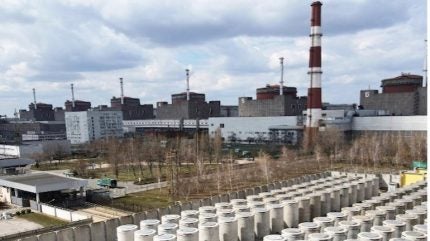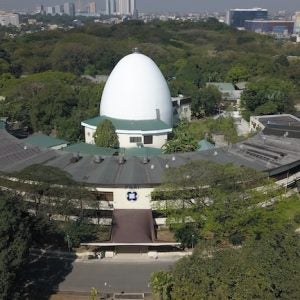
Director General Rafael Mariano Grossi said it was encouraging to see the Zaporizhia NPP (ZNPP) being “considered in ongoing conversations” on the military conflict in Ukraine and he stressed that the International Atomic Energy Agency (IAEA) was ready to provide its technical support for those efforts.
“Without interruption, the IAEA has been present at this major nuclear plant for two and a half years now, doing everything possible to help prevent a potentially disastrous nuclear accident. We all wish for this devastating war to end as soon as possible,” he said.
“With our in-depth knowledge and expertise about the situation at the Zaporizhia NPP, we stand ready to provide our technical contributions and support in the implementation of a future agreement regarding the plant. We will remain present for as long as it is needed to help ensure nuclear safety and security.”
Grossi said in a social media statement that he welcomed “developments on restraint around energy infrastructure” which would contribute to the safety of the ZNPP, located on the frontline of the conflict.
In the course of the peace initiative launched and mediated by US President Donald Trump the subject of Ukrainian NPPs and ZNPP was discussed resulting in confusing and contradictory statements from the participants and the press.
Russia took control of ZNPP in March 2022 and the following September a referendum was held in Zaporozhye region in which according to Russian officials of the Central Election Commission 93.11% (of 541,093 voters) favoured joining the Russian Federation on a turnout of 85.4%. on 5 October, Russian President Vladimir Putin signed a decree formally transferring ZNPP to Russian jurisdiction under nuclear utility Rosenergoatom (part of Rosatom). A Russian Federal State Unitary Enterprise, JSC Zaporizhia NPP, has been established by Rosenergoatom to operate the plant. However, Ukrainian nuclear utility Energoatom continues to claim ownership of the plant.
On 18 March both Ukraine and Russia made clear their views on ZNPP. The New York Times reported that Kiev intended to return the Zaporizhia NPP under its control, citing the head of the subcommittee of the Ukrainian Parliament on Energy Security, Viktoriya Hryb. The same day, a member of Russia’s State Duma Committee on Defence, Andrey Kolesnik, noted that both ZNPP and the operators’ town of Energodar are located in the Zaporozhye region which means they are part of Russian territory.
The following day, in the wake of a 30-day US-mediated truce between Russia and Ukraine whereby both sides undertook not to attack energy infrastructure, Trump spoke by phone with Ukrainian President Volodymyr Zelensky in which he suggested that “American ownership” of Ukrainian NPPs would be the “best protection” for them.
This was confirmed by Secretary of State Marco Rubio and National Security Adviser Mike Waltz who said in a joint statement that the transition of Ukrainian nuclear power plants to American control “would be the best protection for this infrastructure and support for the Ukrainian energy infrastructure.”
According to the New York Times, this was rejected by Ukraine. “During the conversation between Trump and Zelensky, the American president expressed the idea that the United States could take control of Ukrainian power plants. This was a new idea, which Ukrainian energy experts called probably impossible,” the paper reported.
On 20 March Zelensky told a press conference that he had discussed with the American president “only one power plant that is occupied by the Russians”. “[The Americans] want to take [the Zaporizhia Nuclear Power Plant] back from the Russians, and they want to invest and to modernise [the facility]. This is a separate issue. This issue is open to discussion. We can talk about it. But we definitely didn’t discuss the question of ownership with President Trump,” Zelensky said.
The Financial Times, citing Ukrainian officials, then reported that the Trump administration is considering revising the terms of a still unsigned minerals deal with Ukraine to gain access to key energy infrastructure in the country. However, The Washington Post, citing former deputy head of the Ukrainian Energy Ministry Alexey Ryabchin, insisted that nuclear power facilities were not discussed in the context of the US-Ukraine resource deal and that Trump’s idea of controlling power plants caught many in Kiev by surprise.
In any event, Russia will never consider ZNPP as a subject for negotiation. Igor Yushkov, a leading analyst at Russia’s National Energy Security Foundation and an expert at the Financial University, told MK, Russia would not auction its territories, but it could offer Ukraine electricity at preferential prices.
“Ukraine, of course, will insist that the NPP be returned to them, but Russia will not do this. Kiev may then reduce its requests to parity ownership of 50-50. However, I think that Moscow’s principled position will be that the station and the surrounding area must remain under Russian control,” he said. “But, in my opinion, the Russian side is ready to sell electricity from the ZNPP to Ukraine. The issue of tariffs may even be discussed, so that electricity from SNPP is supplied at preferential rates. If this is agreed, then the question will arise about the volume of such sales. Russia wants to use ZNPP to meet the needs of both new regions and the South of Russia. But there are both coal-fired and gas-fired power plants in the Donbass, so there may be surpluses that it would be profitable for Russia to sell to Ukraine.”
Meanwhile, IAEA said it has been observing various maintenance activities at ZNPP. These activities include maintenance at the plant’s 750 kilovolt (kV) open switchyard, where a new fixed diesel generator has also been installed to provide electricity in case all off-site power were to be lost again.
In addition, the team monitored maintenance of the main transformer at reactor unit 5 and of safety equipment in unit 1. Separately, the 330 kV back-up power line was temporarily disconnected for maintenance of a circuit breaker in this switchyard.
“For all NPPs, regular maintenance of structures, systems and components is necessary to prevent degradation of these essential items that would increase the risks to nuclear safety and security,” Director General Grossi said. “This has been a particularly challenging issue during the past three years of war, when much of the focus has been on averting more immediate threats to nuclear safety and security and there has also been a lack of staff and other resources. That remains very much the case but it is positive that some maintenance is still being carried out.”
In his latest report on Ukraine, issued ahead of the regular IAEA Board of Governors meeting earlier this month, Grossi said that the ZNPP had provided the IAEA with the plant’s high-level maintenance plan for 2025, including periods of planned maintenance for all its six reactor units. However, he also noted in the report that “the maintenance being conducted is not yet at the comprehensive level that would normally be expected”.
The IAEA team at ZNPP recently visited the reactor building and safety system rooms at unit 2, observing the presence of condensation on the walls and floor of the reactor hall and some preliminary signs of corrosion in some unpainted areas. The ZNPP said the condensation was caused by the cold shutdown status of the reactor.






